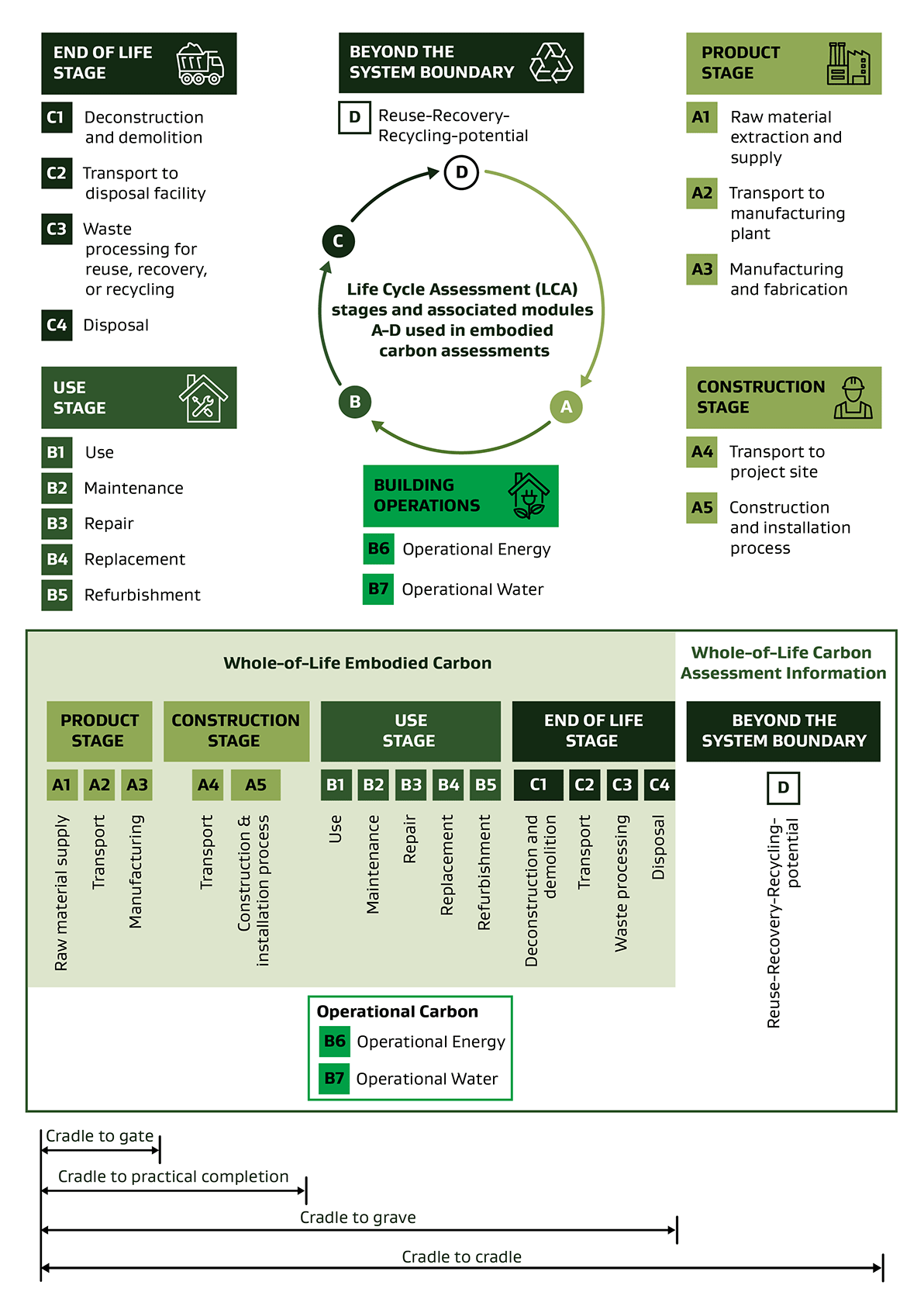Emissions reduction
Last updated: 23 October 2024

MBIE's Climate Change Work Programme is focused on reducing emissions from the building and construction sector.
Context
Aotearoa New Zealand has committed to achieving net zero greenhouse gas (GHG) emissions by 2050. Achieving this goal will require change in many sectors of the economy – including building and construction.
The Government’s approach is focused on transitioning Aotearoa New Zealand to a low emissions economy in a cost-effective way, using effective and efficient policies, as outlined in the Government's climate strategy.
Learn more about the climate strategy – environment.govt.nz
Overview
MBIE's Climate Change Work Programme will include a range of initiatives to support the sector to achieve our goal of near-zero building emissions by 2050.
This will involve both reducing the embodied carbon emissions of buildings and transforming their operational efficiency, as set out in the frameworks that MBIE consulted on in 2020.
Two technical methodologies have been published to support consistent embodied carbon and operational efficiency assessments of buildings in Aotearoa New Zealand.
Example embodied carbon assessments have also been published to illustrate what an assessment could look like.
Whole-of-life embodied carbon
Whole-of-life embodied carbon refers to emissions associated with the use of materials in a building and the construction processes throughout the whole lifecycle of the building including initial construction, maintenance, renovation and demolition.
It comprises the whole-of-life embodied carbon of the materials used in a building, and emissions from activities such as transportation, construction and waste disposal.

MBIE's Whole-of-Life Embodied Carbon Emissions Reduction Framework outlines three ways to reduce the embodied carbon of buildings:
- improving new building efficiency, that is ensuring new buildings are resilient, built-to-last, as big as they need to be and that we are making the best use of existing buildings
- improving material efficiency, that is ensuring buildings are designed to to use less material and reduce waste at both construction and demolition stages
- reducing the carbon intensity of construction materials and products in buildings, that is making greater use of lower carbon materials or reducing emissions from the manufacture of materials.
Whole-of-life Embodied Carbon Framework
In response to feedback received from the consultation on this framework, MBIE developed and published a technical methodology for assessing the whole-of-life embodied carbon of buildings in Aotearoa New Zealand.
The Whole-of-Life Embodied Carbon Assessment Technical Methodology supports the consistency of embodied carbon assessments of buildings in Aotearoa New Zealand, enabling early adopters to incorporate the methodology in their own processes. It is also intended to introduce embodied carbon assessments to those parts of the sector that may be less familiar with the concepts.
Whole-of-Life Embodied Carbon Assessment: Technical Methodology
This technical methodology is intended for use by anyone involved in the design, construction, operation and management of buildings in Aotearoa New Zealand.
Embodied carbon assessment examples
View embodied carbon assessment examples for a selection of buildings in Aotearoa New Zealand.
Embodied carbon assessment examples
Operational efficiency
Operational efficiency is a measure of how much energy and water is used to keep a building comfortable and healthy to be in. The focus is on efficiency because buildings need to maintain minimum indoor environmental qualities whilst also reducing operational emissions.
Operational emissions can be direct, for example from the use of fossil gas or coal in heating and cooking, or indirect, for example from the use of electricity that has emissions associated with generation and transmission on the wider network.
A building with good operational efficiency is cheaper and easier to keep healthy and comfortable. Through smart building design, people can be healthier, reduce emissions, reduce peak energy demand, and save on power bills for homes and businesses.
MBIE's Transforming Operational Efficiency framework outlines three ways to improve the operational efficiency of buildings:
- improve the thermal performance of buildings and indoor environment qualities, for example through the way the building is oriented and designed, and through good insulation and ventilation
- improve energy efficiency within buildings, for example through more energy efficient heating and cooling systems and lighting
- reduce fossil fuel use, for example by moving away from fossil gas or coal to renewable energy sources.
Transforming Operational Efficiency Framework
The Operational Efficiency Assessment Technical Methodology provides a method of calculating the operational efficiency and emissions of a new building. The intention is to improve the consistency of the assessment and reporting of operational efficiency in Aotearoa New Zealand.
The intended audience for this technical methodology is people carrying out operational efficiency assessments and those who may wish to carry out these assessments in the future. We expect that most building sector participants, including homeowners, would typically interact with user-friendly tools based on this technical methodology rather than using the methodology itself.
Operational Efficiency Assessment: Technical Methodology
Operational efficiency assessments have the biggest impact on operational emissions and indoor environmental quality outcomes when undertaken in the early design and concept stages. Research shows that smart design can deliver lower carbon buildings at no additional cost. Design choices made at this stage can lock-in many aspects of building performance for the lifetime of the building, unless substantial upgrades are undertaken later - which are likely to be more costly and may be more carbon intensive.
The next step is to work with technical experts in the sector to develop an Energy Modelling Protocol to go with the Operational Efficiency Technical Methodology and support consistent outcomes-based energy modelling.
2020 frameworks consultation
In 2020 MBIE set out the strategic direction for our climate change work, and consulted the public for their views on proposals to increase the operational efficiency and reduce the whole of life embodied carbon of buildings in Aotearoa New Zealand.
Read more about the strategic direction - mbie.govt.nz
Read more about feedback from the consultation:
Building for Climate Change - Summary report [PDF 2MB]